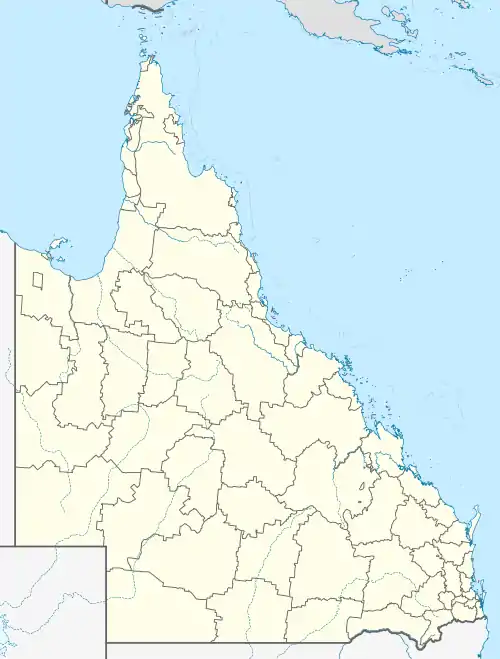Willawong, Queensland
Willawong is an outer southern suburb in the City of Brisbane, Queensland, Australia.[3] In the 2016 census, Willawong had a population of 177 people.[1]
| Willawong Brisbane, Queensland | |||||||||||||||
|---|---|---|---|---|---|---|---|---|---|---|---|---|---|---|---|
 Willawong | |||||||||||||||
| Coordinates | 27.5941°S 153.0047°E | ||||||||||||||
| Population | 177 (2016 census (suburb))[1] | ||||||||||||||
| • Density | 21.07/km2 (54.6/sq mi) | ||||||||||||||
| Established | 1970 | ||||||||||||||
| Postcode(s) | 4110 | ||||||||||||||
| Area | 8.4 km2 (3.2 sq mi) | ||||||||||||||
| Time zone | AEST (UTC+10:00) | ||||||||||||||
| Location | 18.7 km (12 mi) S of Brisbane GPO | ||||||||||||||
| LGA(s) | City of Brisbane (Moorooka Ward)[2] | ||||||||||||||
| State electorate(s) | Algester | ||||||||||||||
| Federal Division(s) | Oxley | ||||||||||||||
| |||||||||||||||
Geography
Willawong is 18.7 kilometres (11.6 mi) by road south of the Brisbane GPO.
The suburb's boundary is mostly defined by the course of the two creeks, Oxley Creek and Blunder Creek.[4] The Sydney–Brisbane rail corridor is aligned along the eastern edge of the suburb.
History
Willawong was officially named by the Queensland Places Names Board in 1970. Willawong is an Aboriginal word meaning the junction of two creeks.[3][4]
During the 1974 Brisbane flood most of the suburb was inundated.[4] In 1983, local residents in Willawong and nearby suburbs began a campaign to stop sand mining in the area.[4]
Willawong once contained a toxic waste dump, which was closed in 1998.[5]
In the 2016 census, Willawong had a population of 177 people.[1]
Facilities
Willawong contains a Brisbane City Council resource recovery centre and a Brisbane Transport bus depot.
Education
There are no schools in Willawong. The nearest primary schools are Acacia Ridge State School and Watson Road State School, both in neighbouring Acacia Ridge to the east, Durack State School in neighbouring Durack to the west, and Inala State School in Inala to the west. The nearest secondary schools are Glenala State High School in Inala to the west and Calamvale Community College in Calamvale to the east.[6]
Demographics
In the 2011 census, the population of Willawong was 192, 45.8% female and 54.2% male.
The median age of the Willawong population was 40 years, 3 years above the Australian median.
59.8% of people living in Willawong were born in Australia, compared to the national average of 69.8%; the next most common countries of birth were Taiwan 9.3%, Vietnam 5.2%, England 4.6%, Indonesia 2.6%, New Zealand 2.6%.
62.1% of people spoke only English at home; the next most common languages were 11.8% Vietnamese, 7.7% Mandarin, 1.5% Urdu, 1.5% Dutch, 1.5% Greek.
References
- Australian Bureau of Statistics (27 June 2017). "Willawong (SSC)". 2016 Census QuickStats. Retrieved 20 October 2018.

- "Moorooka Ward". Brisbane City Council. Brisbane City Council. Archived from the original on 12 March 2017. Retrieved 12 March 2017.
- "Willawong – suburb in City of Brisbane (entry 50235)". Queensland Place Names. Queensland Government. Retrieved 12 October 2020.
- Mynott, Wicki (2009). 150 years: Richlands, Inala & neighbouring suburbs in Brisbane's South West. Richlands, Inala & Suburbs History Group. pp. 226–229.
- John McCarthy (16 October 2007). 6000 houses near Willawong toxic dump. The Courier-Mail. News Queensland. Retrieved 2 July 2012.
- "Queensland Globe". State of Queensland. Retrieved 12 October 2020.